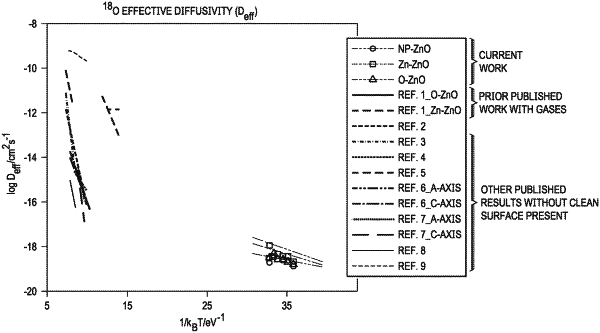| CPC H01L 29/7869 (2013.01) [C23C 22/82 (2013.01); C23C 22/83 (2013.01); C23F 1/30 (2013.01); H01L 21/32134 (2013.01); H01L 21/67075 (2013.01); H01L 27/1225 (2013.01)] | 19 Claims |

|
1. A method of controlling oxygen vacancy concentration in a semiconducting metal oxide, the method comprising:
exposing a treated surface of a crystalline metal oxide to water at a temperature and pressure sufficient to maintain the water in a liquid phase, whereby, during the exposure:
a portion of the water is adsorbed onto the treated surface and dissociates into atomic oxygen and hydrogen, and
the atomic oxygen is injected into and diffuses through the crystalline metal oxide, thereby forming isolated oxygen interstitials and oxygen defect complexes,
wherein the isolated oxygen interstitials replace oxygen vacancies in the crystalline metal oxide.
|